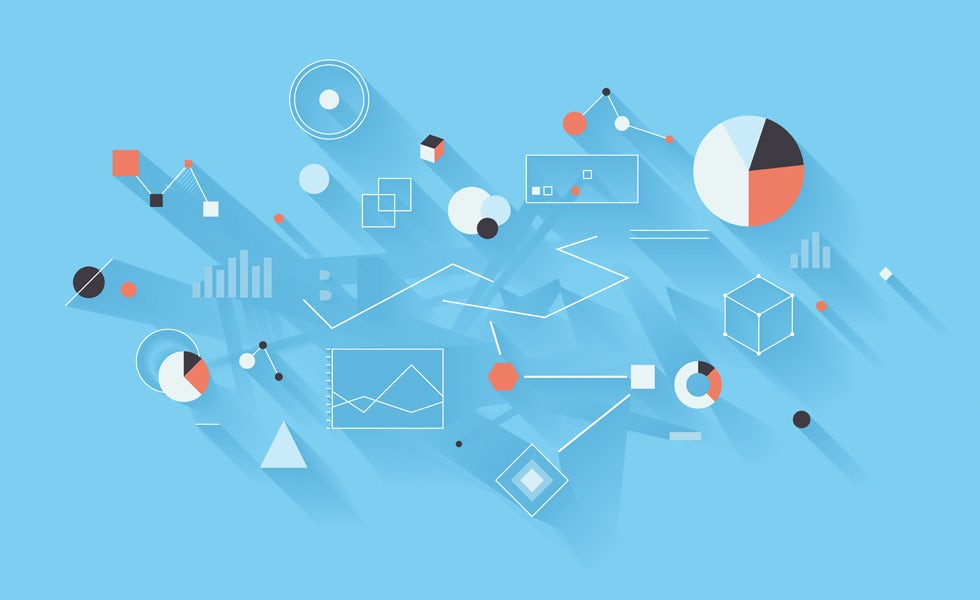Good data comes in small packages
Connecting big data is the best way for marketers to extract maximum value, says Media iQ’s Stewart Easterbrook. If marketers cannot access data in small, insightful packages, they are likely to face big data paralysis.

We have been talking about the proliferation and fragmentation of data for almost a decade, so it’s not a new problem. We all accept that the channels and devices where consumers can (and need to) be found are diversifying, and we accept that connecting the data about our consumers is one of the most important challenges we face.
Big data solutions should be the answer to this, and yet many marketers still do not see this becoming a reality.
When asked how well they were connecting their marketing systems, 97% of marketers saw significant room for improvement. Research shows that 82% of CMOs feel under-prepared for the explosion of data within their business in the next 12 months, while 67% of CMOs feel they are being held back by technology overload, too many data sources, and lack of strategic application and integration of disparate point solutions and data.
We appear to be facing a data connection problem: first, how to connect the lives of our consumers as they diversify their media consumption; and second, how to connect the mass of data which our users, our systems and a host of third-party applications and APIs produce. The bizarre thing is that the technology required to solve these problems – technology which can connect, analyse and digest – already exists. So why isn’t it happening?
One answer is that we find ourselves in big data paralysis: faced with infinite opportunities but unsure how to access and action these, we are effectively staring into the headlights.
If you can relate to this, and I know many CMOs who can, I would like to offer a couple of practical applications of big data which connect information so that you can learn new and powerful things about your consumers.
In order to understand humans in the digital world, we must connect the devices that we use to access the internet; there are two types of approach that can be taken here. The first option is to leverage login data: for creating a single customer view across your own infrastructure this is a logical option, but only possible if you’re blessed with a user-base that logs in frequently across different devices.
The second option is to leverage statistical solutions. There are many players in the market who are logging the movements of devices and identifying the trends of when and where they are connecting to the internet.
It is easy to dismiss these solutions because they lack the certainty and simplicity of a deterministic approach, but that would be a mistake: major providers have been measured by Nielsen to be over the 90% accuracy mark and offer much greater scale than login-based offerings. For instance, once you see a device regularly connecting to a residential IP address, a household match can be made with high certainty; if you then apply logic (a person can’t be in two locations at once) and data science, strong matches to a single person can be made.

Statistical solutions become particularly relevant if you’re buying cross-platform digital media, in which case the implications are huge. Consider that on average we have eight cookie profiles just in desktop environments; if you thought you reached 8 million people on your last campaign, think again – it was probably more like 1 million.
Consider also how drastically different browsing behaviours are on different devices. A ‘user’ (device) that appears to be low value because it largely uses time-wasting apps may actually belong to a person who has also been reviewing relevant products on their laptop. The opportunity to reach that person in an unexpected environment when they’re open to being distracted is a great opportunity to steal share-of-voice and drive incremental sales.
If we turn our attention to the connection of diverse data sets, it is easy to wonder why this still exists as a problem. Programmatic media firms often talk about the billions of data points gathered from online advertising, but this rarely leads to insights that marketers can leverage. A major issue is getting your hands on this data and, if you can do this, being able to cope with its scale.
Another issue is the lack of diversity in this data – it is purely formed of browsing data that gives a myopic view of a user. There are thousands of APIs and hundreds of enterprise solutions that give you access to a higher diversity of data across social media, weather, the economy, news feeds, TV content, grocery prices and so much more. These are real time events that will help you to understand influence much earlier on in the decision-making process – which can guide both media planning and real-time media distribution.
If you can effectively connect online behavioural data with offline information and your own internal data feeds, you can start to answer a host of questions: How is the weather affecting sales versus stock levels? Can I develop a dynamic pricing model or a stock-level prediction model to respond to this? Or more simply – can I respond in real time to social media trends in order to market to relevant consumers at key moments? Can I leverage the effect of my TV advertising in order to make digital activity more efficient?
A major advantage of big data solutions is that non-aggregated, user and event-level data can be stored and processed. This enables different sources to be linked in order to answer these types of questions.
To conclude, these are few examples that demonstrate the power of connecting your data. We’ve seen business after business have its marketing transformed from being able to access insights on a more holistic view of their consumers, which is only made possible via these connecting processes.
Insights is the key word though – if you want to learn something from big data, a final stage of aggregation, distillation, visualisation and human interpretation are all required for most businesses to learn an inspirational piece of information. If you want to avoid big data paralysis therefore, find people who have the expertise to make data small, as well as the expertise to connect it when it’s big.






